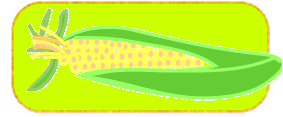
|
Maize God -- Like the Sun God, the Maize God is associated with life and death. He follows the path across the sky, descends into the Underworld, is reborn, and returns to the Sky World. He is shown with a flattened and elongated forehead and partly shaven head and eyebrows, leaving patches of hair on the top of his head,. he resembles a ripened ear of corn. The Maya elite shaped their childrens skulls to resemble the Maize God’s elongated head by tying two boards front and back against the infant’s head.
Manta -- A square of cloth, used as a blanket or cloak. It is still worn by the Maya today.
Maya -- The Maya civilization began about 2600 B.C. and rose to pr ominence around A.D. 250 in what is now Mexico, Guatemala, Belize, Honduras and El Salvador. Inheriting the inventions and ideas of earlier civilizations, they developed astronomy, calendar systems, hieroglyphic writing, ceremonial architecture. They created masonry without metal tools. Their civilization began to decline around A.D. 900, although some continued to thrive until the Spanish conquest in the early sixteenth century.
ominence around A.D. 250 in what is now Mexico, Guatemala, Belize, Honduras and El Salvador. Inheriting the inventions and ideas of earlier civilizations, they developed astronomy, calendar systems, hieroglyphic writing, ceremonial architecture. They created masonry without metal tools. Their civilization began to decline around A.D. 900, although some continued to thrive until the Spanish conquest in the early sixteenth century.
 Mayan -- The language group of the Maya peoples, composed of 31 languages. (The term should be reserved for Mayan languages. The word "Maya" should be used for the name of the people, either as a noun or an adjective.)
Mayan -- The language group of the Maya peoples, composed of 31 languages. (The term should be reserved for Mayan languages. The word "Maya" should be used for the name of the people, either as a noun or an adjective.)
Merida - See "places" section of website .
Milpa -- A cornfield.
Mitnal -- The Mayan realm of the dead. It is the ninth and lowest level of the underworld; a place of eternal cold and darkness. Maya believed the souls of those who lived a bad life were sent to Mitnal. The ruler of Mitnal is the god Hunhau.






